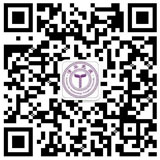Probing the IL10 axis in Macrophages of the Gut and Brain

Dr. Steffen Jung
Department of Immunology, Weizmann Institute of Science
Abstract: The recent past has seen major advances in our understanding of macrophage contributions to physiology and pathophysiology. Intra-vital imaging, fate mapping, cell ablation and targeted mutagenesis in mouse models, complemented by advanced transcriptome, translatome and epigenome profiling on human and mouse samples have provided insights of unprecedented depth. Collectively, these studies highlight that macrophages ought to be studied in physiological, context since their identities and functions are defined by cues they receive from the local tissue environment.
Here I will discuss our efforts to probe tissue macrophages in gut and brain. Specifically, we focus on the IL10 / IL10 receptor axis and its critical role in ensuring macrophage quiescence following respective physiological environmental challenge in the intestine and the brain.
In the colon, macrophages are critical for gut homeostasis. In a murine IBD model based on macrophage-restricted Interleukin 10 (IL-10) receptor deficiency (Cx3cr1Cre:Il10rafl/fl mice), pro-inflammatory mutant gut macrophages cause severe spontaneous colitis resembling the condition of children carrying IL10R mutations (Zigmond et al., 2014). We now established that macrophage-derived IL-23 is the driving factor of this pathology. Specifically, we report that Cx3cr1Cre: Il10rafl/fl:Il23afl/fl mice harboring macrophages deficient for both IL-10R and IL-23 are protected from colitis (Bernshtein et al., in press). Furthermore, by analyzing the epithelial response to pro-inflammatory macrophages, we provide evidence that T cells of colitic animals produce deleterious IL-22 that induces epithelial chemokine expression and a detrimental neutrophil recruitment.
Also all microglia, the parenchymal brain macrophages, prominently express the IL10 receptor. However, analysis of Tamoxifen-treated Cx3cr1CreER: Il10rafl/fl mice revealed that IL-10 sensing is dispensable to maintain brain homeostasis, (Shemer, Haimon et al. in preparation). Rather, we will report data establishing that IL-10 is required to rapidly and robustly restore microglia quiescence following peripheral endotoxin challenge.
Time: 14:00-15:30, May 31th (Friday)
Venue: Room D326, Medical Science Building
Host: Dr. Hai Qi

Copyright © 2017 Institute for Immunology Tsinghua University
Contact Address: Room D302, Medical Science Building, Tsinghua University, Beijing 100084, China
Tel: (86) 10-62776420 Fax: (86) 10-62776420
